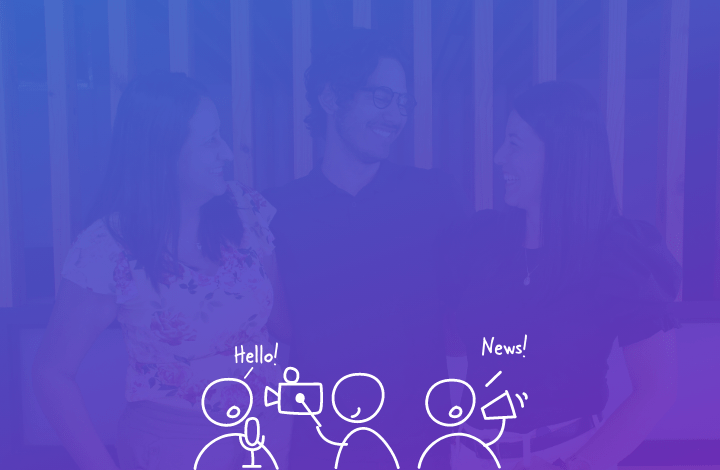May 9, 2024

Software Development Outsourcing
What is a Staffing Model? Exploring Pros, Cons, and the Perfect Fit for Your Business
The modern business landscape thrives on flexibility and agility. In today’s dynamic market, building a successful team requires a multi-faceted approach to talent acquisition. Enter the staffing model, a strategic approach that empowers businesses to leverage a diverse range of workforce options to achieve their goals. This in-depth guide delves into the intricacies of staffing models, exploring their core components, benefits, drawbacks, and various implementations. By the end, you’ll be equipped to analyze your unique hiring needs and select the staffing model that allows you to build a dream team that propels your business forward.

Traditional Staffing vs. Staffing Models: A Shifting Landscape
The traditional staffing model relies primarily on full-time employees hired directly by your company. This approach offers stability and long-term commitment, but can also be less flexible and potentially more expensive.
Staffing models, on the other hand, provide a spectrum of options to augment your traditional workforce:
Temporary Staffing
Engaging individuals for predefined durations to address short-term needs or specific tasks. Ideal for one-off projects, seasonal spikes in workload, or maternity/paternity leave coverage.
Contract Staffing
Hiring skilled professionals for a fixed period, often with extension possibilities based on performance. This approach is well-suited for ongoing projects with defined timelines.
Temp-to-Hire Staffing
Utilizing temporary staffing to assess a candidate’s fit for a potential permanent role. This allows you to “try before you buy” and build confidence in your hiring decision.
Direct Placement
Partnering with staffing agencies to identify and place permanent employees aligned with your specific needs. Effective when seeking long-term talent but lacking the resources for extensive internal recruitment.
Freelancers and Independent Contractors
Utilizing online platforms or your network to engage specialized freelance talent for specific projects or ongoing needs. This option provides access to a diverse skill set without incurring full-time employee benefits.
Part-Time Employees
Hiring qualified individuals for a portion of the regular workweek to fill specific needs or manage workload fluctuations. This allows you to optimize resource allocation while offering work-life balance for your employees.
By understanding the pros and cons of these different staffing models, you can make informed decisions to optimize your workforce strategy and achieve your business goals.
The Rise of Staffing Models: Driven by Necessity and Opportunity
The utilization of staffing models is on the rise, driven by a confluence of factors:
- Skills Shortage: A 2023 report by McKinsey & Company estimates a global talent shortage of up to 85 million workers by 2030. Staffing models provide access to a wider talent pool, mitigating skill gaps within your organization.
- Increased Demand for Flexibility: A 2022 study by Upwork revealed that 59% of the global workforce now freelances in some capacity. Staffing models cater to this growing preference for flexible work arrangements.
- Economic Pressures: A 2022 study by the National Bureau of Economic Research found that businesses utilizing temporary staff reduced labor costs by an average of 15%. Staffing models offer cost-saving benefits compared to solely relying on full-time employees.
These statistics highlight the increasing importance of staffing models as strategic tools for talent acquisition and workforce management.
The Allure of Staffing Models: Unveiling the Pros
Staffing models offer numerous advantages for businesses of all sizes. Here’s a closer look at some key pros:
- Cost-Effectiveness: Reduced costs associated with employee benefits, recruitment, and payroll taxes for temporary, contract, and freelance workers.
- Increased Talent Pool: Access to a broader range of specialized skills and expertise unavailable within your existing employee pool.
- Flexibility and Scalability: The ability to scale your workforce up or down based on project demands or seasonal fluctuations.
- Faster Time-to-Fill: Staffing agencies streamline the recruitment process, filling open positions quickly with pre-vetted candidates.
- Reduced Risks: Temporary and contractual staffing provides flexibility in case a candidate isn’t the perfect fit.
- Improved Efficiency: Focuses on utilizing the right talent for the specific tasks at hand, optimizing resource allocation.
- Enhanced Innovation: Accessing fresh ideas and diverse perspectives from temporary or contract workers can fuel innovation.
By strategically leveraging staffing models, you can unlock a multitude of benefits that enhance your competitive edge and support long-term business growth.
Navigating the Challenges: Exploring Cons of Staffing Models
While staffing models offer significant advantages, it’s important to consider potential drawbacks:
- Reduced Control: Less control over temporary, contract, or freelance workers compared to full-time employees.
- Integration Challenges: Integrating temporary or contract workers into your existing team dynamic can require additional effort.
- Knowledge Transfer: Ensuring knowledge transfer from temporary staff when their assignment ends can be challenging. This can be mitigated through comprehensive documentation and handover processes.
- Compliance Risks: Properly classifying workers and understanding labor laws associated with different staffing models is crucial. Consulting with legal counsel can help you navigate these complexities.
Addressing these potential challenges through clear communication, training, and adherence to labor regulations allows you to mitigate risks and leverage the full potential of staffing models.
Finding the Perfect Fit: Selecting the Right Staffing Model for Your Needs
The most suitable staffing model depends on your specific needs and unique business goals. Here are crucial factors to consider when making your decision:
- Project Duration: How long will the specific task or need last? Temporary staffing is ideal for short-term needs, while contract staffing is better suited for ongoing projects.
- Skill Requirements: What specialized skills are necessary for the role? Freelancers and independent contractors may be a good fit for specialized niche skills.
- Budget Constraints: What financial resources are available for staffing purposes? Temporary and contract staffing often offer cost-effective solutions compared to full-time employees.
- Workload Fluctuations: Do you experience seasonal or cyclical variations in your workload? Part-time employees provide flexibility to manage these fluctuations.
By carefully evaluating these factors and analyzing the pros and cons of different staffing models, you can make informed decisions.
Building Your Dream Team: Actionable Steps to Implementing a Staffing Model
Now that you understand the various staffing models and their considerations, how can you put them into action? Here are some actionable steps:
- Conduct a Thorough Needs Assessment: Define your specific hiring requirements by analyzing your current workforce, identifying upcoming skill gaps, and projecting future staffing needs.
- Develop a Strategic Staffing Plan: Align your staffing model selection with your overall business strategy. Determine which types of talent are best suited to fulfill your goals.
- Partner with Reputable Staffing Agencies (Optional): Leverage the expertise of staffing agencies specializing in your industry to access a broader talent pool and streamline the recruitment process.
- Implement Clear Selection Criteria: Establish clear benchmarks to assess candidates’ qualifications, experience, and cultural fit, regardless of the staffing model employed.
- Invest in Onboarding and Training: Provide a comprehensive onboarding program for all new team members, integrating them smoothly into your existing team dynamic.
- Maintain Open Communication: Foster open communication with all team members, including temporary, contract, and freelance workers. Regularly address concerns and provide ongoing feedback.
By following these actionable steps, you can effectively implement the staffing model that best suits your needs.
Conclusion: Building a Future-Proof Workforce with Staffing Models
The traditional full-time employee model remains a cornerstone of workforce management. However, the staffing modeloffers a dynamic and adaptable approach to talent acquisition in today’s ever-evolving business landscape.
By understanding the pros and cons of different staffing models, conducting a thorough needs assessment, and taking strategic action, you can build a future-proof workforce that fosters innovation, drives efficiency, and propels your business forward. Remember, the ideal workforce is a flexible one, and the staffing model equips you with the tools to achieve that flexibility while securing the top talent your business needs to thrive.
Ready to take the next step? Book a meeting now with our team and learn more about how you can grow your team with our tailor-made talent.
Learn more about Nearshore Staff augmentation Latin America in 2024 here









